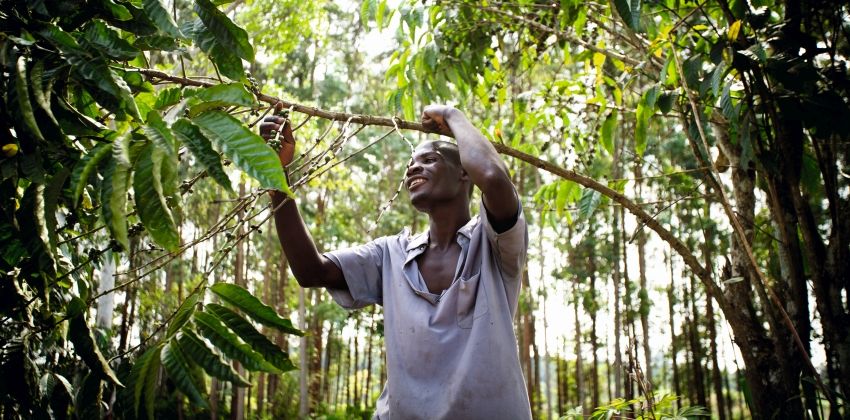Share Content
Article Link Copied
Brighter future for young farmers: lessons from Uganda

The Youth Development Project shows remarkable results and has profoundly improved the lives of young farmers in Uganda. Claudia Huber tells us more about the lessons learned from this inspiring project.
You are the author of the paper “Lessons learned from the Youth Development Project”. Could you tell us how did the project help young farmers in Uganda?
Before we talk about the results, it is important to look at the context. More than three quarters of the Ugandan population are younger than 30 years. 80% of the population lives in rural areas. Many of these young people are neither in school, training or working. In addition, Uganda is an East African country where the economy heavily depends on agriculture, but being a farmer is perceived negatively; something you fall back on in case nothing else has worked out.
The Youth Development Project (YDP) worked with almost 1,700 youth and showed them that farming can be a successful business. Three years after the project ended, all youth we talked to are still engaged in agriculture. For me, this is the most important outcome! Furthermore, it is noteworthy, that young farmers reported on average 2.5 times increase in income. We have also looked at figures of livelihood improvements (such as ownership of land or quality of housing). All of these indicators have shown – partly impressive – improvements.
“…young farmers reported on average 2.5 times increase in income.”
Were there any wider effects of the project on farmers and their communities?
Yes, parents and community elders had quite a negative perception of their youth. They thought that youth would not carry this through or that they would use their first earnings to buy a motorcycle and leave for the city. This perception has completely changed. Parents are now proud of what their children achieved. Also collaboration between youth has improved. Finally, we have anecdotal evidence that gender relations within households got better. Young couples report they jointly plan and manage their household finances. Overall, social cohesion in the communities has improved.
That sounds encouraging. Which ingredients made the project successful?
The main success factor is the combination of several components that reinforced each other positively. One component was agricultural training sessions in which youth learned how to grow crops and market them. Essentially, how to make money out of a garden. Next, in financial literacy trainings, they learned how to save money and what it means to take out a loan. They were able to practice this with so-called village savings and loan groups. Finally, training on gender relations and joint household planning helped to make better use of the earnings and increased the well-being of the whole family.
Another success factor of the project was, that although working in traditional coffee growing communities, it first focused on seasonal crops such as beans, tomatoes or maize. Early harvest allowed youth to quickly see some success, earn money and keep motivation up.
“The main success factor is the combination of several components that reinforced each other positively.”
So, what are the lessons learned from the Youth Development Project?
Surely, it is important to have the right partners at all levels. Jacobs Foundation combined its strong background on child and youth development with the Hanns R. Neumann Stiftung’s extensive local knowledge and expertise in agriculture. At the community level, the YDP partnered with farmers’ organizations, which anchored the project to make it sustainable beyond the project life span. As I mentioned before, when working with youth it was crucial to get the parents on board by organizing specific parents’ meetings. Finally, we saw again how important access to financial services is, as soon as the idea of “farming as a business” has taken root.
Does it mean that the project’s approach could be replicated in other regions or countries?
It surely can. However, local contexts are different, as are people and communities. As such, any project has to be adjusted to the specific context. Nevertheless, many of the learnings, success factors and recommendations can indeed be a very good basis for any similar project.
Find out more about the results of the YDP project in the publication: Lessons learned from the Youth Development Project (YDP)